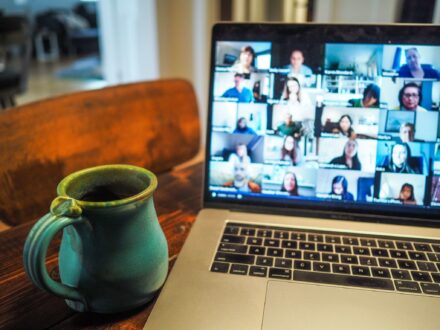As of writing this post, we’re exactly nine months into working remotely due to COVID19. What I miss most is the ease of face-to-face meetings and that immediate feedback, visible and audible, of being at the same table. I miss the ability to read how someone is receiving the information or even how people are feeling when they enter the room. All these subtle cues help me adapt my facilitation methods to keep everyone engaged and in alignment.
Working remotely means having meetings where we can’t see everyone and people are on mute. This makes for little-to-no perceived engagement or feedback during the meeting. Here are some hacks I’ve used to work around this challenge and drive non-awkward engagement.
Note: A lot of these tips are geared towards being the facilitator or presenter, but they could work equally well for attendees.
1. How is your morning?
I like to log in to the call a minute or two early. This helps me prepare any screens I need to share. I also use this time to greet people by name when they join, ask how their day is going, and make small talk.
These two minutes at the start of the call have helped our team connect in small ways. I’ve noticed that these small connections make for a more relaxed, conversational meeting.
2. Why are we here?
We should answer this for any meeting, but with remote meetings, it’s extra important. Attendees could be coming directly from another meeting without having the chance to check the meeting invite, get their head in the space for this topic, etc.
As meeting facilitators, we should take a couple of minutes to remind everyone why we’re here, what the goal is for this session, and what topics we’ll discuss. I like to establish who will be taking notes during the meeting (hopefully this isn’t a surprise to them), to make sure we capture what was discussed, open questions, decisions, and next steps.
3. Can you see my screen?
I’d hate to be five minutes into describing what’s on a slide or design and have someone say, “Um, Taylor, we can’t see your screen.”
To make sure this doesn’t happen, I pick someone on the call to verify when they can see what I’m sharing. I’ll say something like, “Hey Paul, I’m about to share my screen. Tell me when you can see it. You should see…”
This was an evolution of asking the whole group, “Can you see my screen?” which typically resulted in a long awkward pause. It keeps the meeting moving along and keeps the energy up.
4. I have a question for you…
When you’re in virtual meetings, especially if you’re not fully engaged in the topic, there is such a draw to check email, respond to those Slack messages, and allow other distractions to creep in. As a facilitator, I recognize this can happen despite everyone’s best intentions.
When I have a question part-way through a presentation or discussion, I’ll call on the person before stating the question, something like, “Hey Paul, here’s a question for you. Given [context of the problem], what are your thoughts on…”
This gives them a moment to focus back in if they were distracted, and it allows me to summarize the discussion transparently with the team.
5. How will we move this work forward?
Typically, in an in-person meeting, we can see someone writing down tasks that they are going to work on. When working remotely, I reserve some time at the end of each call to recap the next steps we identified, who is going to take the lead on moving that work forward, and (hopefully) when it’s reasonable to check back in or when they can complete the work.
In addition, if you have a minute or two after the meeting, sending along notes and next steps is really helpful for all participants. I like to take it a step further and include the next steps in the email and attach the more detailed notes.
6. Can we wrap this up 5 minutes early?
The biggest benefit to working remotely is needing zero travel time. The tradeoff is that we hop from one call to the next, context switching often and very quickly throughout the day. This is mentally taxing, and it takes away our ability to just take a short break, get a drink of water, check our messages, or get ready for the next meeting.
For meetings I facilitate, I plan to end five minutes early so everyone has that time to break, catch up, and prepare. This practice was met with resounding approval, and our team is quick to remind each other of this goal if it seems as though this practice is slipping.
These prompts, while not ironclad, have been helpful for me in making the most of our team’s remote meetings. More than anything, they’ve helped me remind myself of the pressures of constant communication that we’re all facing. I have empathy for my colleagues that they too are being pulled in several directions. Hopefully, with these tactics, I can make it a little easier to move the work forward.

